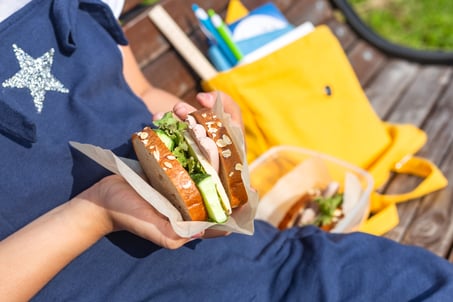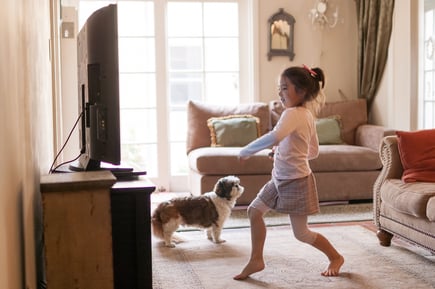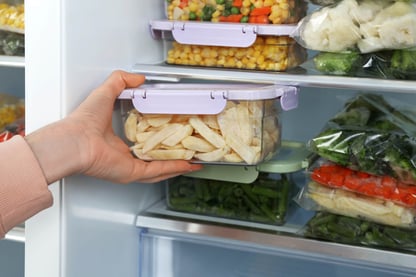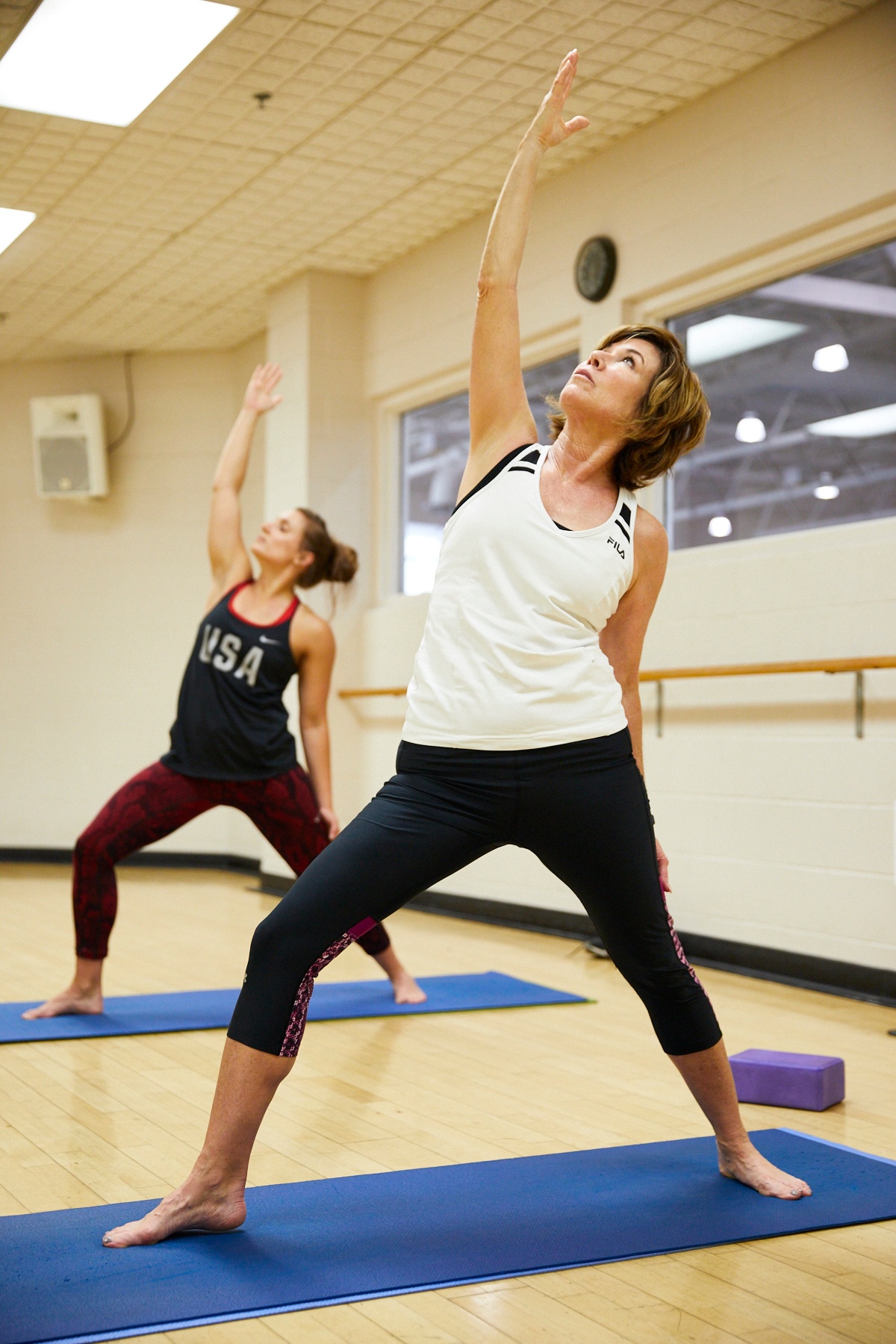 Halloween is a day full of fun, costumes, treats, friends, and family! With all the food and candy, is it even possible to be “healthy” and still enjoy the festivities? The answer is YES. Take a look at these SPOOK-tacular tips to keep you and your family in good health.
Halloween is a day full of fun, costumes, treats, friends, and family! With all the food and candy, is it even possible to be “healthy” and still enjoy the festivities? The answer is YES. Take a look at these SPOOK-tacular tips to keep you and your family in good health.
Find a Balance
Halloween comes around once a year. It’s a time to feed your social and mental health, which may require easing up on the physical health guidelines for a moment. Remember, any decision you make for your physical health that comes at the expense of your social and mental health may not be all that great after all.
Let’s be honest, Halloween is FUN. The candy is FUN. Trick-or-treating is FUN. All this feeds our mental and social health. Plus, think about it: daily nutritional choices consistently over time have the greater impact on your health than nutrition choices on one holiday.
What does this “balance” look like? Keep reading.
Use portion control and omit the “off-limits” mentality.
All foods in moderation can fit into a healthy regimen. Instead of making candy off-limits, work it into your established routine. Still have breakfast, lunch, and dinner. Make those meals nutritious, including fruits, veggies, whole grains, and lean proteins. At each meal, offer one serving of Halloween candy to everyone. Instead of the full-size pieces, make them like the “fun-size” or “snack-size.” This allows everyone to enjoy a sweet, while filling up on the nutritious foods that are important for physical health.
Make festive, healthy options.
On the day that you all go trick-or-treating, really get into the spirit! Make nutritious meals that are Halloween themed. Some examples include:
- Green-goop smoothie with Halloween straws: Include low-fat Greek yogurt, spinach, chia seeds, pineapple, and low-fat milk of choice. Try this recipe.
- Monster teeth: Slice a green apple. Smear peanut butter on one side of a slice (bottom lip of the mouth). Stick yogurt-covered raisins in the peanut butter. Smear a little more peanut butter on another apple slice and place on top of the raisins for the top lip.
- Boo-nana pops: Cut bananas in half and place a stick in the end as a handle. At the tip of the banana, add two chocolate chips as eyes. Serve frozen, cold, or at room temperature.
- Devil spiders: Make deviled eggs. On the top, put an olive in the center for the spider’s body. Then put slices of olives around the outer edge of the egg for the legs.
- Cute pumpkins: Peel Cuties/clementines/mandarins. Slice celery into small sticks. Place a celery stick at the top of each mandarin for the pumpkin stem.
- Yo-yo graveyard: Scoop nonfat Greek yogurt into cups. Crumble some chocolate cookies on top (just a thin layer to cover the top) for the dirt. Write “Boo” on graham crackers for tombstones. Place one tombstone in each yogurt cup.
- Spider sandwich: Make a sandwich of choice. Cut the sandwich into a circle. Place chocolate chips as the eyes (use peanut butter to help them stick). Use pretzels as the legs, sticking them into the bread or middle of the sandwich, with the tips sticking out.
- Ghost cheese sticks: Get individually wrapped mozzarella cheese sticks. Take a sharpie and make black dots for the eyes and a block dot for an open mouth. These make perfect snacks while you are out and about trick-or-treating.
This ensures everyone is filling up on nutritious options high in fiber and protein, which leaves less room for tons of candy. Now, do not mistake this for “NO ROOM” for candy. There is still room, but not as much. You are just making sure everyone is properly nourished and still having fun in the process.
When you get home that night, enjoy a few pieces of candy with the kiddos, then put it in a non-accessible place. You are in control of when and how much the kids get. You are also in control of when and how much you get as well. Refer to what I said about portion control to plan your approach here. Remain consistent so that you and the kids both have a clear understanding of when candy will be served. For example, one individual piece will be served with each meal. It gives both you and the kids something to look forward to and does not make candy off-limits, but instead teaches proper portion control and provides a positive relationship with all foods. In the long run, this reduces binging or obsessing over any one food.
Stay active.
One of the best things you can do is to get everyone moving and active. Be sure to get in a workout on the big day, even if it is a quick 20-minute HIIT session at home, or try this spooky workout. Get the kiddos moving with you! Walk from house to house instead of driving during trick-or-treating. Go on a walk in your costumes if you are not trick-or-treating this year. Or just go on a walk in your regular clothes and enjoy all the house decorations. You can also play games:
- Monster Tag: The tagger is a monster and anyone they tag becomes the monster.
- Monster vs. Ghost Freeze Tag: If the monster tags you, you become frozen until one of your ghost teammates unfreezes you. The goal is for the monster to freeze all the ghosts!
ENJOY HALLOWEEN!
Have fun with your family. Soak in the moments. Laugh a lot. Feed your mental and social health, knowing it will benefit your physical health in the long run and that choices you make consistently over time matter the most. Stay safe.
As always, reach out to your NIFS Registered Dietitian if you need some holiday nutrition support.
This blog was written by Sabrina Goshen, NIFS Registered Dietitian. To learn more about the NIFS bloggers, click here.


 Recently I heard someone say something along the lines of, “That sixth-grade basketball player is ranked #1 in the country.” That got me thinking: How in the world are we ranking sixth-graders? They haven’t even gone through puberty yet!
Recently I heard someone say something along the lines of, “That sixth-grade basketball player is ranked #1 in the country.” That got me thinking: How in the world are we ranking sixth-graders? They haven’t even gone through puberty yet!  As many of us are confronted with the decision of whether to send our children back to school or continue with online learning, we are faced with many questions that we had never had to ask ourselves before. Breakfast, lunch, and often snacks are mainly consumed during these hours at school, so as we continue to see Indiana trying to return to normal and reopen, we might need to tailor our eating habits to ensure we are not risking unnecessary exposure to COVID-19 when refueling our bodies throughout the day. These ideas also work for adults who are returning to the workplace or have already returned to the workplace.
As many of us are confronted with the decision of whether to send our children back to school or continue with online learning, we are faced with many questions that we had never had to ask ourselves before. Breakfast, lunch, and often snacks are mainly consumed during these hours at school, so as we continue to see Indiana trying to return to normal and reopen, we might need to tailor our eating habits to ensure we are not risking unnecessary exposure to COVID-19 when refueling our bodies throughout the day. These ideas also work for adults who are returning to the workplace or have already returned to the workplace. We all know that physical fitness and wellness are prerequisites for a productive and healthy life. Exercise is good not only for the body, but for the mind as well. We want to ensure a future full of great experiences. For one population, our children, participating in physical activity may be becoming more and more challenging, whether it be from lack of interest, lack of support, or lack of funding for programs in their community. One area in which this population excels, however, is technology. Without a doubt, smartphone technology is a part of our current culture and most likely will be for a long time. For some older people, this might be a newer concept. At the moment, though, ensuring the future of physical fitness for the next generation will need to coexist with technology.
We all know that physical fitness and wellness are prerequisites for a productive and healthy life. Exercise is good not only for the body, but for the mind as well. We want to ensure a future full of great experiences. For one population, our children, participating in physical activity may be becoming more and more challenging, whether it be from lack of interest, lack of support, or lack of funding for programs in their community. One area in which this population excels, however, is technology. Without a doubt, smartphone technology is a part of our current culture and most likely will be for a long time. For some older people, this might be a newer concept. At the moment, though, ensuring the future of physical fitness for the next generation will need to coexist with technology.  When I say “meal prep,” do you picture hours upon hours in the kitchen, a stockpile of containers, and food that you are sick of by week’s end? PAUSE right there! I am here to tell you that meal prep does not have to be that way. It does not have to be too time-consuming or hard, and you don’t have to eat the exact same meal over and over.
When I say “meal prep,” do you picture hours upon hours in the kitchen, a stockpile of containers, and food that you are sick of by week’s end? PAUSE right there! I am here to tell you that meal prep does not have to be that way. It does not have to be too time-consuming or hard, and you don’t have to eat the exact same meal over and over. .jpg?width=513&name=GettyImages-1216458718(1).jpg) In one way or another I think it’s safe to say that the spread of this virus has affected all of us in the last few weeks. And for some, it has become life-changing! As parents of a school-aged kid, my husband and I have had some tough conversations with our kindergartener explaining why he won’t be seeing his friends or teacher at school for a while, if at all. Not only have we had to have tough talks, we’ve had to become pretty creative in how we keep him active and engaged.
In one way or another I think it’s safe to say that the spread of this virus has affected all of us in the last few weeks. And for some, it has become life-changing! As parents of a school-aged kid, my husband and I have had some tough conversations with our kindergartener explaining why he won’t be seeing his friends or teacher at school for a while, if at all. Not only have we had to have tough talks, we’ve had to become pretty creative in how we keep him active and engaged. The kids and grandkids are home! With them being home, this means you are having to provide breakfasts and lunches. For those that relied on schools to provide these meals, this can be a stressor added to the day. Maybe your kids received meals for free or at a reduced price. Maybe you are being expected to work from home, all while attempting to help your kids through e-learning and cook them lunch. There are an abundance of reasons as to why this may be tough. You are not alone. We are in this together- as a community. We will get through this.
The kids and grandkids are home! With them being home, this means you are having to provide breakfasts and lunches. For those that relied on schools to provide these meals, this can be a stressor added to the day. Maybe your kids received meals for free or at a reduced price. Maybe you are being expected to work from home, all while attempting to help your kids through e-learning and cook them lunch. There are an abundance of reasons as to why this may be tough. You are not alone. We are in this together- as a community. We will get through this. Running, skipping, hopping, bounding, throwing, and crawling are all activities children around the world enjoy and are necessities for proper movement development. Most sports and lifetime fitness activities require one or more of these basic motor skills. Developing basic motor skills sometimes is not our main priority when it comes to our children’s upbringing. In our lifetime, the focus on physical education has somewhat declined due to various reasons, with one reason being a deemphasis on playground time and even family-time physical activity. Beyond physical fitness, there are many other benefits that one can get from being more active, especially at a young age.
Running, skipping, hopping, bounding, throwing, and crawling are all activities children around the world enjoy and are necessities for proper movement development. Most sports and lifetime fitness activities require one or more of these basic motor skills. Developing basic motor skills sometimes is not our main priority when it comes to our children’s upbringing. In our lifetime, the focus on physical education has somewhat declined due to various reasons, with one reason being a deemphasis on playground time and even family-time physical activity. Beyond physical fitness, there are many other benefits that one can get from being more active, especially at a young age.
 Powerlifters
Powerlifters Has dinnertime become the dreaded time lately? Getting picky children to eat can be very frustrating. Children of different ages may respond differently to various tactics. Here are a few ideas for how you can get your child to try (and hopefully like) new foods, and get better nutrition.
Has dinnertime become the dreaded time lately? Getting picky children to eat can be very frustrating. Children of different ages may respond differently to various tactics. Here are a few ideas for how you can get your child to try (and hopefully like) new foods, and get better nutrition.